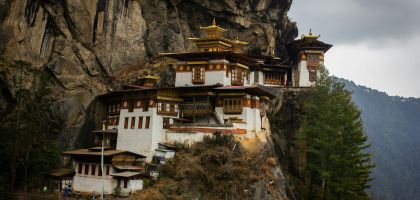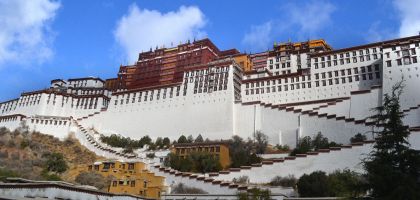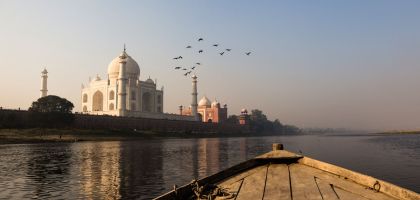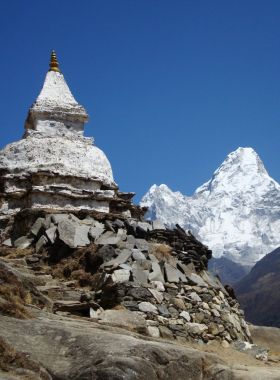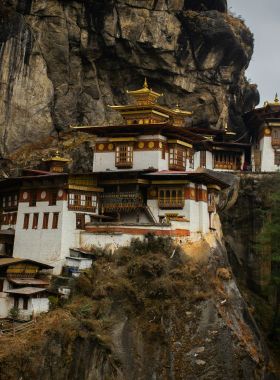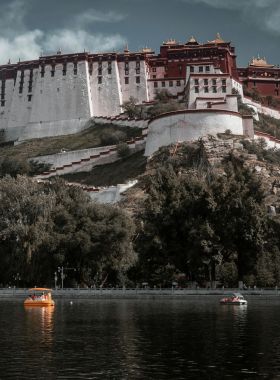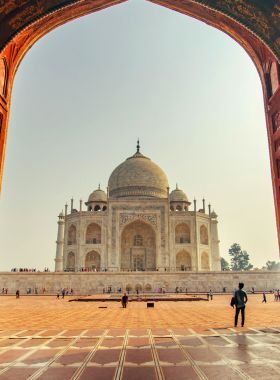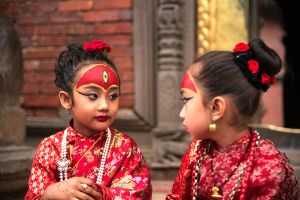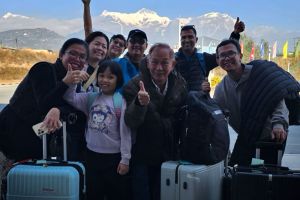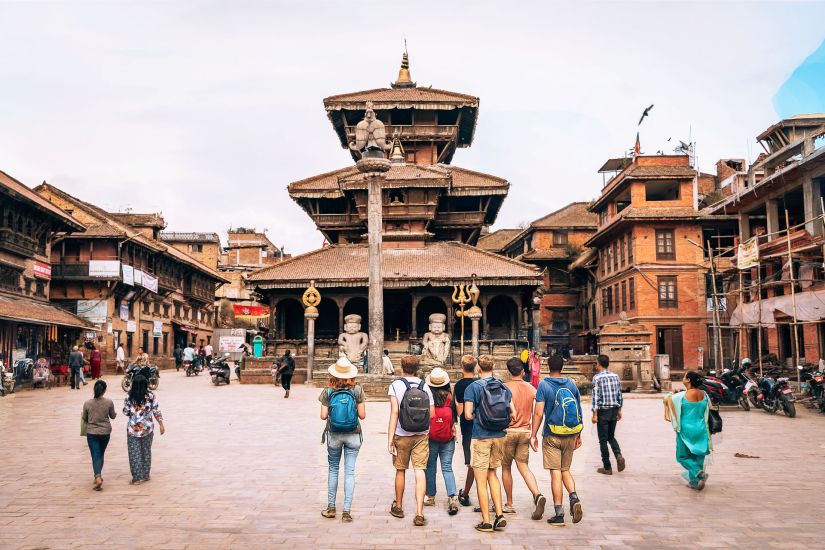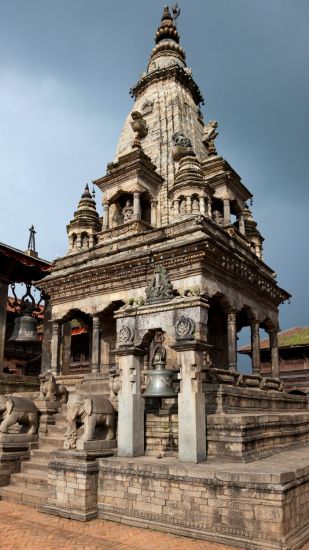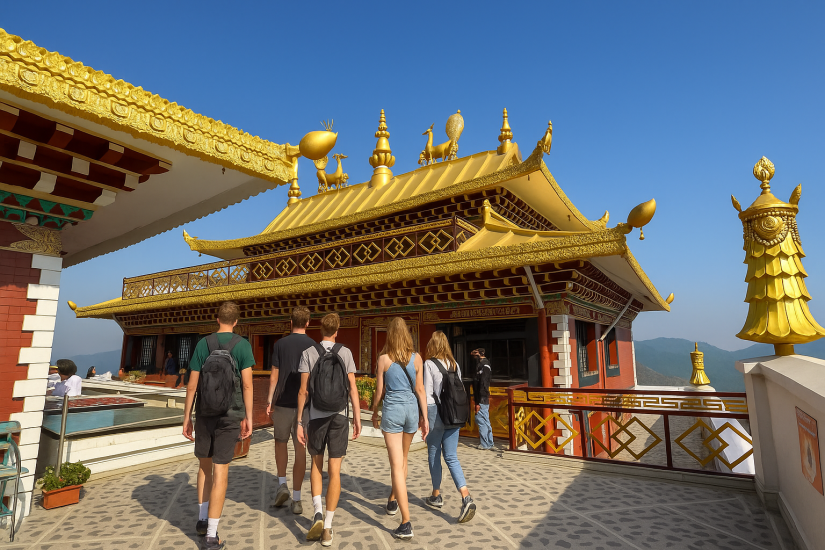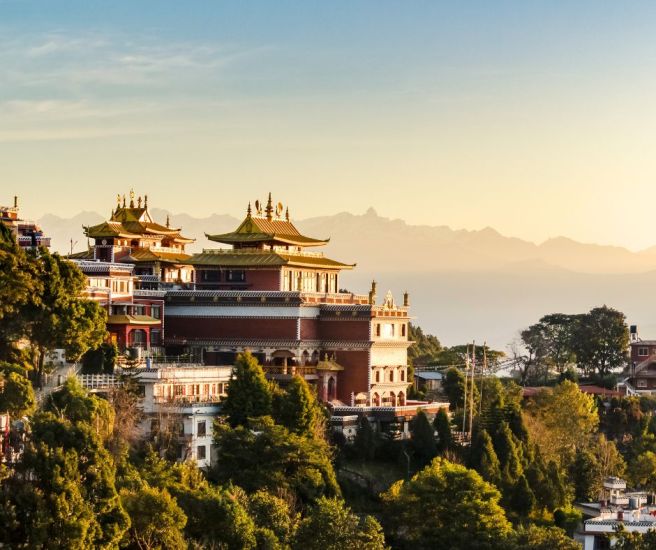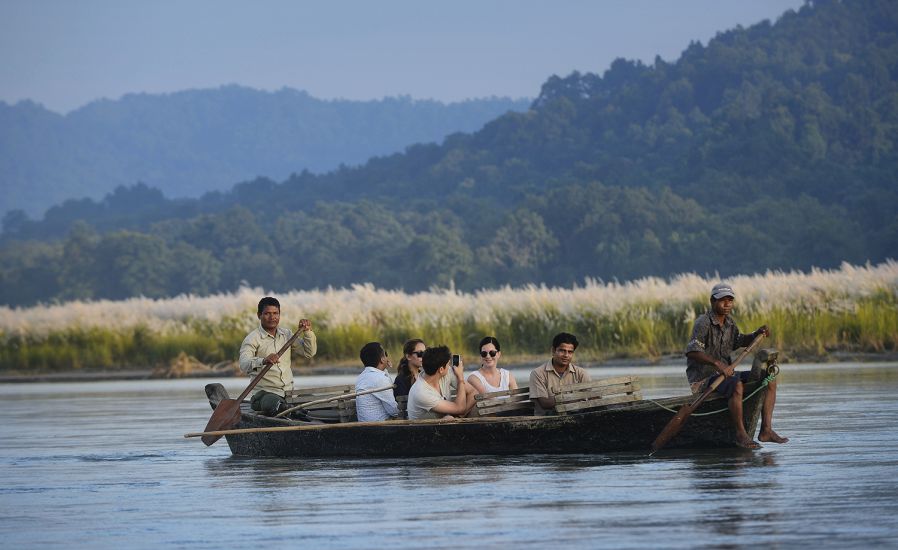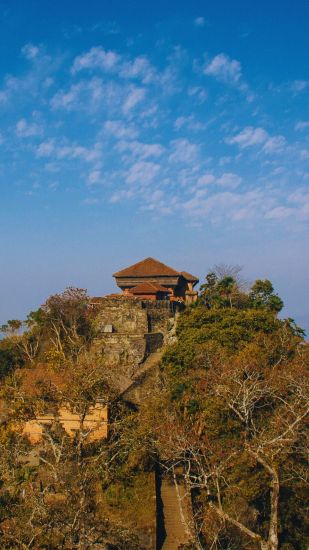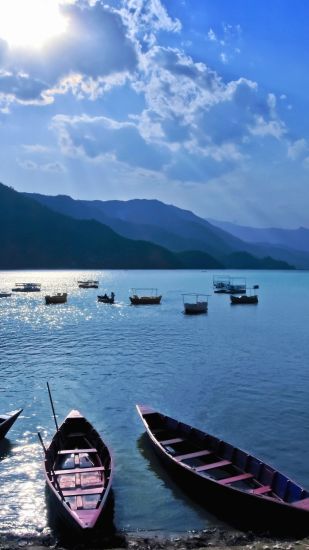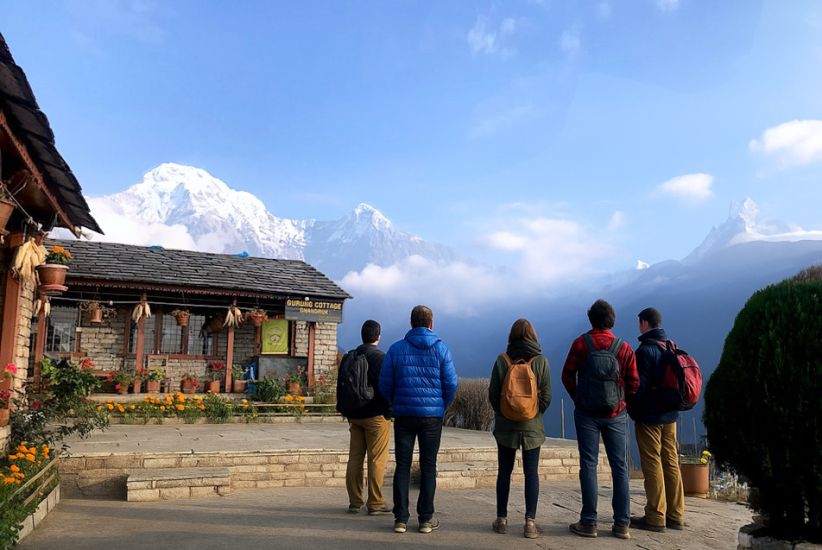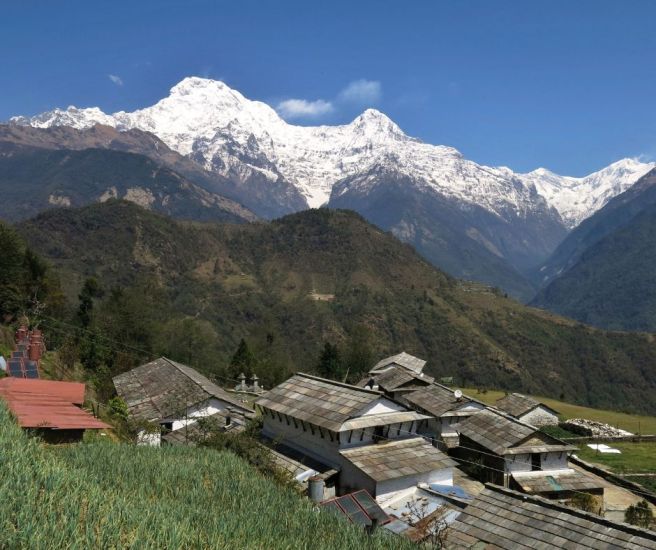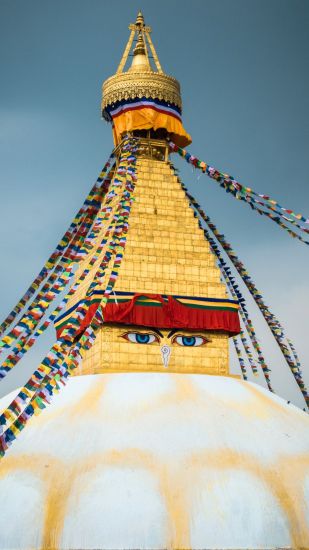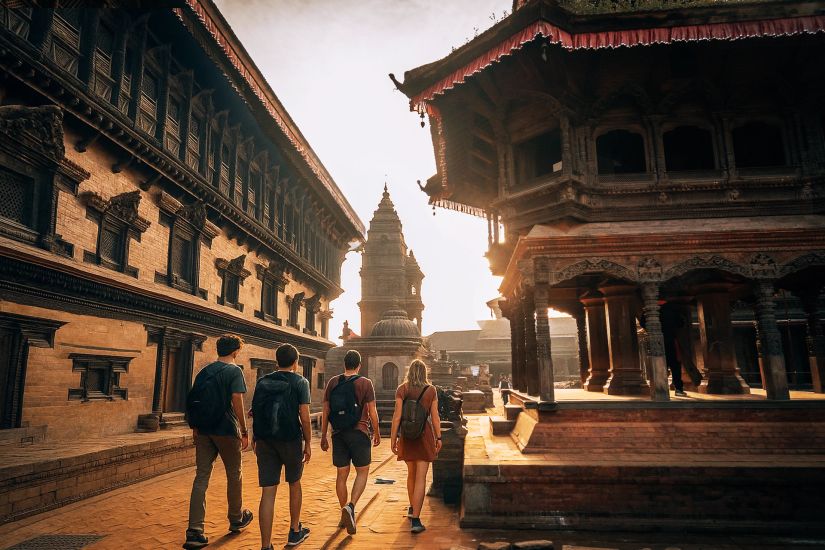Educational Tour Nepal
13 Days / Nepal
Activity
Difficulty Level
Destinations
Trip Start / End
Accommodation
Travel Style
Best time to travel
Personalized Travel Advice

Dev Raj Nepal
+977 9851096523
Personalized Travel Advice

Dev Raj Nepal
+977 9851096523
Detailed Itinerary
01
DAY
01
Arrive at Tribhuvan International Airport, where your guide will greet you and help you get settled. After landing, take a scenic drive to Bhaktapur, a medieval town full of history and culture. Use the ride to relax, enjoy the views of the Kathmandu Valley, and get your first glimpses of Nepal’s unique landscapes and villages along the way.
Arrival Kathmandu – Drive to Bhaktapur
Arrive at Tribhuvan International Airport, where your guide will greet you and help you get settled. After landing, take a scenic drive to Bhaktapur, a medieval town full of history and culture. Use the ride to relax, enjoy the views of the Kathmandu Valley, and get your first glimpses of Nepal’s unique landscapes and villages along the way.
02
DAY
02
Start your day in Bhaktapur, the heart of Newari culture and an essential stop for any student seeking a rich educational experience in Nepal. Wander through its UNESCO World Heritage squares, marvel at centuries-old pagoda temples, intricately carved wooden windows, and stone fountains, and gain hands-on insight into traditional pottery and craft-making. Bhaktapur provides a unique learning opportunity to understand how art, architecture, and daily life have shaped a vibrant, living culture for centuries.
After lunch, embark on a scenic drive through the Kathmandu Valley’s terraced hills and small villages to reach Namobuddha Monastery, a key Tibetan Buddhist pilgrimage site perched on a peaceful hilltop. Here, students can observe the spiritual practices, rituals, and monastic lifestyle of Tibetan Buddhists. Learn the inspiring story of compassion and selflessness associated with this monastery while appreciating how Tibetan traditions coexist harmoniously with local Nepalese culture. The panoramic views, serene atmosphere, and gentle mountain breezes provide a perfect setting for reflection and experiential learning.
This day is a must-see for students, offering a rare chance to explore how two distinct cultures, Newari and Tibetan, flourish side by side, balancing tradition, spirituality, and everyday life. By witnessing these cultural contrasts and harmonies, students gain hands-on exposure to social studies, anthropology, history, and religious practices in a real-world context.
Bhaktapur– Namobuddha Exploration
Start your day in Bhaktapur, the heart of Newari culture and an essential stop for any student seeking a rich educational experience in Nepal. Wander through its UNESCO World Heritage squares, marvel at centuries-old pagoda temples, intricately carved wooden windows, and stone fountains, and gain hands-on insight into traditional pottery and craft-making. Bhaktapur provides a unique learning opportunity to understand how art, architecture, and daily life have shaped a vibrant, living culture for centuries.
After lunch, embark on a scenic drive through the Kathmandu Valley’s terraced hills and small villages to reach Namobuddha Monastery, a key Tibetan Buddhist pilgrimage site perched on a peaceful hilltop. Here, students can observe the spiritual practices, rituals, and monastic lifestyle of Tibetan Buddhists. Learn the inspiring story of compassion and selflessness associated with this monastery while appreciating how Tibetan traditions coexist harmoniously with local Nepalese culture. The panoramic views, serene atmosphere, and gentle mountain breezes provide a perfect setting for reflection and experiential learning.
This day is a must-see for students, offering a rare chance to explore how two distinct cultures, Newari and Tibetan, flourish side by side, balancing tradition, spirituality, and everyday life. By witnessing these cultural contrasts and harmonies, students gain hands-on exposure to social studies, anthropology, history, and religious practices in a real-world context.
03
DAY
03
After breakfast, set off on a scenic drive to Chitwan, the gateway to Nepal’s renowned national park and a living laboratory for students interested in environmental studies, wildlife conservation, and ecology. Along the way, observe lush river valleys, terraced fields, and rural villages, gaining insight into how communities interact sustainably with their environment.
Arrive in Chitwan and settle into your student-friendly lodge. In the evening, participate in a short orientation session introducing the region’s biodiversity, conservation initiatives, and wildlife protection programs, providing a foundation for the hands-on experiences to come.
Cap off the day with an engaging Tharu cultural program, where students can experience traditional music, dance, and storytelling, offering a window into the unique lifestyle and heritage of the Tharu community. This is an excellent opportunity for cultural immersion and experiential learning, showing how local traditions and the natural environment coexist harmoniously.
Drive to Chitwan: Environmental Learning
After breakfast, set off on a scenic drive to Chitwan, the gateway to Nepal’s renowned national park and a living laboratory for students interested in environmental studies, wildlife conservation, and ecology. Along the way, observe lush river valleys, terraced fields, and rural villages, gaining insight into how communities interact sustainably with their environment.
Arrive in Chitwan and settle into your student-friendly lodge. In the evening, participate in a short orientation session introducing the region’s biodiversity, conservation initiatives, and wildlife protection programs, providing a foundation for the hands-on experiences to come.
Cap off the day with an engaging Tharu cultural program, where students can experience traditional music, dance, and storytelling, offering a window into the unique lifestyle and heritage of the Tharu community. This is an excellent opportunity for cultural immersion and experiential learning, showing how local traditions and the natural environment coexist harmoniously.
04
DAY
04
Glide along the Rapti River in a canoe, where the quiet waters offer the perfect chance to spot birds, crocodiles, and the rare gharial in their natural habitat. The morning is the perfect time to take this canoe ride as students can observe river ecosystems and aquatic life, gaining first-hand insight into the delicate balance of wetland environments.
Next, venture into Chitwan National Park, Nepal’s first national park and a UNESCO World Heritage Site, spanning approximately 932 square kilometers (360 sq mi). The park is famous for its dense forests, grasslands, rivers, and wetlands, supporting diverse wildlife including rhinos, tigers, elephants, deer, and over 500 species of birds. During your jeep safari, keep your eyes peeled as every sighting becomes a hands-on ecological lesson. Guides share stories about the park’s flora, fauna, and ongoing conservation efforts, showing how humans and wildlife coexist sustainably. The safari will last for 3-4 hours.
Pause for a packed lunch surrounded by the sights and sounds of the forest, and on your return journey, visit a Tharu village. Meet locals, experience traditional music, dance, and storytelling, and see how this community lives in harmony with its environment, blending culture with conservation.
Jungle Safari & Ecological Exporation
Glide along the Rapti River in a canoe, where the quiet waters offer the perfect chance to spot birds, crocodiles, and the rare gharial in their natural habitat. The morning is the perfect time to take this canoe ride as students can observe river ecosystems and aquatic life, gaining first-hand insight into the delicate balance of wetland environments.
Next, venture into Chitwan National Park, Nepal’s first national park and a UNESCO World Heritage Site, spanning approximately 932 square kilometers (360 sq mi). The park is famous for its dense forests, grasslands, rivers, and wetlands, supporting diverse wildlife including rhinos, tigers, elephants, deer, and over 500 species of birds. During your jeep safari, keep your eyes peeled as every sighting becomes a hands-on ecological lesson. Guides share stories about the park’s flora, fauna, and ongoing conservation efforts, showing how humans and wildlife coexist sustainably. The safari will last for 3-4 hours.
Pause for a packed lunch surrounded by the sights and sounds of the forest, and on your return journey, visit a Tharu village. Meet locals, experience traditional music, dance, and storytelling, and see how this community lives in harmony with its environment, blending culture with conservation.
05
DAY
05
Travel to a local school in the Chitwan region for a day of hands-on volunteering. Students can help with painting the walls of the classrooms, organizing school spaces, tidying up playgrounds, or assisting with small construction and maintenance projects. The activities are designed to be fun, interactive, and practical, giving students a chance to work together in a real community setting.
During breaks, spend time interacting with local children, joining them in games, drawing, or simple conversations. This is a unique opportunity to see school life in rural Nepal, from colorful classrooms to the lively energy of students at play. Wander around the school grounds, notice the traditional architecture, gardens, and playgrounds, and take in the atmosphere of a community-centered learning environment.
Return to the lodge in the late afternoon for some free time to relax, enjoy the surrounding greenery, or reflect on the day’s experiences.
Local School Visit & Volunteering Project
Travel to a local school in the Chitwan region for a day of hands-on volunteering. Students can help with painting the walls of the classrooms, organizing school spaces, tidying up playgrounds, or assisting with small construction and maintenance projects. The activities are designed to be fun, interactive, and practical, giving students a chance to work together in a real community setting.
During breaks, spend time interacting with local children, joining them in games, drawing, or simple conversations. This is a unique opportunity to see school life in rural Nepal, from colorful classrooms to the lively energy of students at play. Wander around the school grounds, notice the traditional architecture, gardens, and playgrounds, and take in the atmosphere of a community-centered learning environment.
Return to the lodge in the late afternoon for some free time to relax, enjoy the surrounding greenery, or reflect on the day’s experiences.
06
DAY
06
Drive through lush hills, terraced fields, and traditional villages to reach Gorkha, the historic kingdom where the unification of modern Nepal began. Gorkha holds a special place in Nepalese history, and walking its streets feels like stepping back in time.
Explore the Gorkha Palace, perched on a hilltop with breathtaking panoramic views of the hills and valleys below. Learn about King Prithvi Narayan Shah, the visionary leader who unified dozens of small principalities into modern Nepal. Discover his military strategies, the challenges he faced, and the historic battles that shaped the nation. Wander through palace corridors, examine ancient weapons, royal artifacts, and murals, and get a sense of how the king and his army lived, trained, and defended the kingdom.
Students can also explore nearby temples and shrines connected to Gorkha’s royal heritage, gaining insight into the religious and cultural practices intertwined with the kingdom’s history. The combination of hilltop views, historic architecture, and stories of valor creates a fully immersive experience in one of Nepal’s most important historical sites.
Drive to Gorkha – Exploring History
Drive through lush hills, terraced fields, and traditional villages to reach Gorkha, the historic kingdom where the unification of modern Nepal began. Gorkha holds a special place in Nepalese history, and walking its streets feels like stepping back in time.
Explore the Gorkha Palace, perched on a hilltop with breathtaking panoramic views of the hills and valleys below. Learn about King Prithvi Narayan Shah, the visionary leader who unified dozens of small principalities into modern Nepal. Discover his military strategies, the challenges he faced, and the historic battles that shaped the nation. Wander through palace corridors, examine ancient weapons, royal artifacts, and murals, and get a sense of how the king and his army lived, trained, and defended the kingdom.
Students can also explore nearby temples and shrines connected to Gorkha’s royal heritage, gaining insight into the religious and cultural practices intertwined with the kingdom’s history. The combination of hilltop views, historic architecture, and stories of valor creates a fully immersive experience in one of Nepal’s most important historical sites.
07
DAY
07
Set out on a scenic drive to Pokhara, taking in the rolling hills, rivers, and villages that mark the transition from historic Gorkha to the Annapurna region. Cross the city of Pokhara and continue by road to Syauli Bazar, the starting point for a trek into the mountains.
Begin the hike to Ghandruk, a traditional Gurung village perched amid majestic Himalayan peaks. Along the trail, notice terraced fields, pine forests, and small streams, offering glimpses of rural mountain life. As you approach Ghandruk, the stunning views of Annapurna, Machhapuchhre (Fishtail), and surrounding peaks unfold, creating an unforgettable backdrop for your first night in the mountains.
Arrive at the village lodge, settle in, and enjoy the tranquil atmosphere of the Himalayas. This evening offers a chance to explore the village lanes, meet local families, and experience Gurung hospitality, all while surrounded by towering peaks.
Gorkha to Ghandruk – The Himalayas
Set out on a scenic drive to Pokhara, taking in the rolling hills, rivers, and villages that mark the transition from historic Gorkha to the Annapurna region. Cross the city of Pokhara and continue by road to Syauli Bazar, the starting point for a trek into the mountains.
Begin the hike to Ghandruk, a traditional Gurung village perched amid majestic Himalayan peaks. Along the trail, notice terraced fields, pine forests, and small streams, offering glimpses of rural mountain life. As you approach Ghandruk, the stunning views of Annapurna, Machhapuchhre (Fishtail), and surrounding peaks unfold, creating an unforgettable backdrop for your first night in the mountains.
Arrive at the village lodge, settle in, and enjoy the tranquil atmosphere of the Himalayas. This evening offers a chance to explore the village lanes, meet local families, and experience Gurung hospitality, all while surrounded by towering peaks.
08
DAY
08
This day will provide an excellent opportunity to gain educational insight on mountain cultures and communities of Nepal. Spend the day immersed in Ghandruk, a traditional Gurung village perched amidst panoramic views of the Annapurna mountains. Wander the village lanes and discover the history, traditions, and daily life of this resilient Himalayan community.
Take short walks to nearby viewpoints, where the majestic peaks of Annapurna and Machhapuchhre rise above terraced fields and small stone houses. Along the trails, notice the rural way of life: families tending their fields, children walking to school along steep paths, and villagers balancing tradition with the demands of mountain living. There is a quiet beauty in their simplicity and endurance, showing how life thrives even in challenging landscapes.
Experience Gurung culture firsthand by trying on traditional attire, joining a local dance, and interacting with villagers. In the evening, talk to the locals and learn about their traditions and cosmology, which offer insight into how communities sustain themselves, celebrate life, and stay connected to their environment. The day blends scenic exploration, cultural immersion, and observation of rural Himalayan life, leaving you with a deep appreciation for both nature and human resilience.
Ghandruk Village – Mountain Culture
This day will provide an excellent opportunity to gain educational insight on mountain cultures and communities of Nepal. Spend the day immersed in Ghandruk, a traditional Gurung village perched amidst panoramic views of the Annapurna mountains. Wander the village lanes and discover the history, traditions, and daily life of this resilient Himalayan community.
Take short walks to nearby viewpoints, where the majestic peaks of Annapurna and Machhapuchhre rise above terraced fields and small stone houses. Along the trails, notice the rural way of life: families tending their fields, children walking to school along steep paths, and villagers balancing tradition with the demands of mountain living. There is a quiet beauty in their simplicity and endurance, showing how life thrives even in challenging landscapes.
Experience Gurung culture firsthand by trying on traditional attire, joining a local dance, and interacting with villagers. In the evening, talk to the locals and learn about their traditions and cosmology, which offer insight into how communities sustain themselves, celebrate life, and stay connected to their environment. The day blends scenic exploration, cultural immersion, and observation of rural Himalayan life, leaving you with a deep appreciation for both nature and human resilience.
09
DAY
09
Descend from Ghandruk through terraced fields, pine forests, and small villages, following the trail to Kimche village, where your vehicle will be waiting. Along the way, notice the daily rhythms of rural Himalayan life, from farmers tending their fields to children walking along the winding trails.
Arrive in Pokhara in the late afternoon and take time to soak in the serene lakeside atmosphere. Stroll along the Phewa Lake, enjoy the gentle ripples on the water, and take an optional boat ride with views of the Annapurna and Machhapuchhre peaks reflected in the lake. Evening is free for students to explore local markets, cafes, or simply relax by the water, enjoying the tranquil beauty of the city framed by mountains.
Ghandruk to Pokhara
Descend from Ghandruk through terraced fields, pine forests, and small villages, following the trail to Kimche village, where your vehicle will be waiting. Along the way, notice the daily rhythms of rural Himalayan life, from farmers tending their fields to children walking along the winding trails.
Arrive in Pokhara in the late afternoon and take time to soak in the serene lakeside atmosphere. Stroll along the Phewa Lake, enjoy the gentle ripples on the water, and take an optional boat ride with views of the Annapurna and Machhapuchhre peaks reflected in the lake. Evening is free for students to explore local markets, cafes, or simply relax by the water, enjoying the tranquil beauty of the city framed by mountains.
10
DAY
10
Explore the highlights of Pokhara, blending culture, history, and Himalayan scenery. Begin with the World Peace Pagoda, perched on a hill overlooking Phewa Lake, where panoramic views of Annapurna and Machhapuchhre create a breathtaking backdrop for photography and reflection.
Next, visit Gupteshwor Cave, a fascinating limestone cavern with underground streams and a sacred Shiva shrine. Observe the intricate geological formations carved over centuries.
Stop by the Tibetan Refugee Centre, a hub showcasing Tibetan crafts, culture, and history. Explore traditional arts, weaving, and local community life, and see artisans at work.
Spend time at the International Mountain Museum, exploring exhibits on Himalayan peaks, mountaineering history, glaciers, and local cultures. It’s an opportunity to connect lessons in geography, ecology, and anthropology with the stunning landscapes around Pokhara.
End the day with a leisurely walk along Pokhara’s lakeside, soaking in the vibrant atmosphere. Enjoy cafés, watch live music, or simply admire the reflections of the mountains on the calm waters of Phewa Lake.
Pokhara Exploration
Explore the highlights of Pokhara, blending culture, history, and Himalayan scenery. Begin with the World Peace Pagoda, perched on a hill overlooking Phewa Lake, where panoramic views of Annapurna and Machhapuchhre create a breathtaking backdrop for photography and reflection.
Next, visit Gupteshwor Cave, a fascinating limestone cavern with underground streams and a sacred Shiva shrine. Observe the intricate geological formations carved over centuries.
Stop by the Tibetan Refugee Centre, a hub showcasing Tibetan crafts, culture, and history. Explore traditional arts, weaving, and local community life, and see artisans at work.
Spend time at the International Mountain Museum, exploring exhibits on Himalayan peaks, mountaineering history, glaciers, and local cultures. It’s an opportunity to connect lessons in geography, ecology, and anthropology with the stunning landscapes around Pokhara.
End the day with a leisurely walk along Pokhara’s lakeside, soaking in the vibrant atmosphere. Enjoy cafés, watch live music, or simply admire the reflections of the mountains on the calm waters of Phewa Lake.
11
DAY
11
Drive back to Kathmandu, winding through lush hills, rivers, and terraced landscapes, with plenty of opportunities to pause and take in the scenic views. Arrive in Thamel, the vibrant heart of Kathmandu, where the evening is free to explore narrow lanes, browse local shops, and pick up souvenirs. Thamel is the bustling tourist district in the heart of Kathmandu, famous for its narrow, winding streets filled with shops, restaurants, and cafés. It’s a lively hub where travelers can shop for handicrafts, trekking gear, traditional souvenirs, and local artwork.
Drive to Kathmandu
Drive back to Kathmandu, winding through lush hills, rivers, and terraced landscapes, with plenty of opportunities to pause and take in the scenic views. Arrive in Thamel, the vibrant heart of Kathmandu, where the evening is free to explore narrow lanes, browse local shops, and pick up souvenirs. Thamel is the bustling tourist district in the heart of Kathmandu, famous for its narrow, winding streets filled with shops, restaurants, and cafés. It’s a lively hub where travelers can shop for handicrafts, trekking gear, traditional souvenirs, and local artwork.
12
DAY
12
Begin the day with a visit to Patan, also known as Lalitpur, a city famed for its artistic and cultural heritage. Explore Patan Durbar Square, a UNESCO World Heritage site, with its stunning temples, intricately carved wooden windows, and historic palaces. Wander through narrow streets where centuries of history are evident in every corner, such as stone courtyards, traditional shrines, and bustling markets. Observe local craftsmen at work in their workshops, preserving centuries-old techniques in metalwork, woodcarving, and Paubha painting (Newari religious art), offering an educational glimpse into the living traditions that have shaped Nepali culture.
Next, head to Boudhanath Stupa, one of the largest stupas in the world and a center of Tibetan Buddhist culture. Walk around the stupa, observe the monks in prayer, and admire the intricate architecture and colorful prayer flags, reflecting centuries of devotion and tradition.
In the afternoon, attend a special presentation by a prominent mountain climber. Gain firsthand insights on the changing ecology of the Himalayas, climate change, and its impact on mountain landscapes. Learn about the resilience required in mountaineering, the challenges of high-altitude expeditions, and the delicate balance between adventure and conservation.
Later, meet Pushpa Basnet, the 2016 CNN Super Hero and 2012 CNN Hero, whose Early Childhood Development Centre (ECDC) supports children living with parents in prison, and Anuradha Koirala, a previous CNN Hero recognized for her work against human trafficking. These encounters provide a unique perspective on social innovation, courage, and transformative community work.
Conclude the day with a farewell dinner at a traditional Nepalese restaurant, enjoying local flavors and reflecting on the journey through Nepal’s culture, mountains, and communities.
Kathmandu: Inspirational Encounters
Begin the day with a visit to Patan, also known as Lalitpur, a city famed for its artistic and cultural heritage. Explore Patan Durbar Square, a UNESCO World Heritage site, with its stunning temples, intricately carved wooden windows, and historic palaces. Wander through narrow streets where centuries of history are evident in every corner, such as stone courtyards, traditional shrines, and bustling markets. Observe local craftsmen at work in their workshops, preserving centuries-old techniques in metalwork, woodcarving, and Paubha painting (Newari religious art), offering an educational glimpse into the living traditions that have shaped Nepali culture.
Next, head to Boudhanath Stupa, one of the largest stupas in the world and a center of Tibetan Buddhist culture. Walk around the stupa, observe the monks in prayer, and admire the intricate architecture and colorful prayer flags, reflecting centuries of devotion and tradition.
In the afternoon, attend a special presentation by a prominent mountain climber. Gain firsthand insights on the changing ecology of the Himalayas, climate change, and its impact on mountain landscapes. Learn about the resilience required in mountaineering, the challenges of high-altitude expeditions, and the delicate balance between adventure and conservation.
Later, meet Pushpa Basnet, the 2016 CNN Super Hero and 2012 CNN Hero, whose Early Childhood Development Centre (ECDC) supports children living with parents in prison, and Anuradha Koirala, a previous CNN Hero recognized for her work against human trafficking. These encounters provide a unique perspective on social innovation, courage, and transformative community work.
Conclude the day with a farewell dinner at a traditional Nepalese restaurant, enjoying local flavors and reflecting on the journey through Nepal’s culture, mountains, and communities.
13
DAY
13
After breakfast, transfer to Tribhuvan International Airport for your onward journey. Take a moment to reflect on the educational experiences of the past days, from Nepal’s rich culture and spiritual heritage to its mountains, rural communities, and Himalayan ecology. Carry these memories and insights with you as you depart.
Departure
After breakfast, transfer to Tribhuvan International Airport for your onward journey. Take a moment to reflect on the educational experiences of the past days, from Nepal’s rich culture and spiritual heritage to its mountains, rural communities, and Himalayan ecology. Carry these memories and insights with you as you depart.
Tour Cost
At High Asia Tours, we know that understanding tour costs is essential for planning your trip. Due to variables such as accommodation choices, meal plans, transportation options, group size, and seasonal demand, providing an exact price upfront is challenging.
To assist you, we offer a starting price to give a general idea of the cost:
The starting cost for this tour is
Includes / Excludes
Inclusions
-
All accommodations on a twin sharing basis
-
All ground transfers
-
All meals mentioned in the itinerary
-
Experienced, knowledgeable local guides
-
Entry fees to monuments and museums
-
Trekking permits
-
All government taxes
Exclusions
-
International airfare to/from Nepal
-
Nepal visa fees
-
Meals not specified in the itinerary
-
Travel insurance
-
Personal expenses (laundry, phone, internet, etc.)
-
Tips for guides and drivers
-
Extra activities not mentioned in the itinerary
Trip Info
Educational Tour in Nepal
A student trip across mountains and valleys and through the layers of memory, history, and belief. What the students see and learn is how a place continues to shape the people who live within it.
This educational tour in Nepal offers students a learning-oriented journey into one of the world’s most diverse cultural and natural landscapes. From ancient temples and palaces of Kathmandu Valley to the quiet villages in the Himalayas, every destination allows students to see how history, heritage, and traditions are lived and preserved. This academic experience connects classrooms to real life, where lessons found in art, rituals, and community rather than being confined to books.
The Himalayas has some of the most intriguing sites and this educational tour is scholarly and developmental, introducing students to Nepal’s ecology, environment, and remarkable biodiversity. Encounters with the country’s unique flora and fauna, as well as its majestic Himalayan scenery, provide an insightful perspective on conservation and sustainability. Guided visits with local experts and inspiring personalities turn this into a knowledge-building journey that broadens understanding beyond textbooks.
While this trip is easy, offering a relaxed pace and comfortable stay, it is also is mind-expanding and training-focused, balancing culture and heritage with adventure and fun. Students can enjoy light treks, experience local interactions, and engage in meaningful exchanges with communities. In this way, the tour becomes didactic without being rigid. It a developmental journey where knowledge, wisdom, and traditions come alive in the most engaging way possible.
Designed as a comprehensive Educational Tour in Nepal, this student trip takes participants through mountains, hills, and plains, highlighting culture, history, and ecology at every stop. It is a journey that combines learning, adventure, and personal growth, creating lasting knowledge and memorable experiences.
From the Himalayas to the Terai
This Educational Tour in Nepal offers students an unforgettable journey through the country’s stunning geographic diversity, from towering Himalayan peaks to rolling middle hills and lush Terai plains. Each region provides unique ecological and cultural experiences, making this student trip an ideal opportunity for immersive learning.
Immersive Cultural Encounters
Students engage with a variety of communities, including Newar, Gurung, Tharu, and Tibetan groups. From traditional festivals to visits to local schools and artisan workshops, this student travel experience provides hands-on insight into the customs, lifestyles, and social structures that shape Nepalese life.
A Journey Through Heritage and History
Explore historic palaces, ancient temples, and UNESCO World Heritage Sites that reveal Nepal’s rich past. This Educational Tour in Nepal turns history into a living lesson, giving students a direct connection to architecture, royal legacies, and centuries-old traditions.
Spirituality and Wisdom
The tour highlights Nepal’s spiritual heritage, covering Hindu and Buddhist practices. Visiting sacred temples and monasteries, students observe rituals and ceremonies that convey wisdom, values, and philosophies still shaping communities today.
Adventure and Natural Exploration
From Himalayan treks to river canoeing and forest safaris, this student trip blends adventure with learning. Participants explore diverse landscapes while connecting ecological knowledge with firsthand outdoor experiences.
Ecology and Conservation in Action
Experience Nepal’s remarkable biodiversity and ecosystems, from subtropical forests to alpine regions. Learn about conservation, wildlife protection, and sustainable living practices directly from experts, making this Educational Tour in Nepal a truly insightful environmental journey.
Inspirational Encounters
Meet local leaders, social innovators, and experts in education, conservation, and mountaineering. Gain perspective on resilience, creativity, and community development, making this student travel experience a transformative and mind-expanding journey.
The best time for this Educational Tour in Nepal, which combines cultural exploration, wildlife experiences, and the Ghandruk trek, is during autumn (September to November) and spring (March to May). These seasons offer mild and stable weather, making it ideal for trekking, sightseeing, and outdoor learning activities.
Autumn (September to November): This is the peak season for trekking and exploration in Nepal. The weather is cool and dry, with daytime temperatures ranging from 15°C to 25°C in the Kathmandu Valley, and slightly cooler conditions in Chitwan and Pokhara (10°C to 20°C). Clear skies provide stunning views of the Himalayas, making it perfect for the Ghandruk trek and panoramic vistas around Pokhara. Festivals such as Dashain and Tihar offer a rich cultural experience, giving students a unique opportunity to observe local traditions and rituals firsthand.
Spring (March to May): Spring is another excellent season for this tour, with warmer temperatures (20°C to 30°C in the Kathmandu Valley and 10°C to 20°C in higher regions). The hills and mountains burst with colorful blooms, including rhododendrons along the Ghandruk trail, providing a vibrant backdrop for learning about Nepal’s ecology and natural landscapes. Clear weather ensures safe and enjoyable trekking conditions, and the season is ideal for both outdoor educational activities and exploring cultural sites, wildlife areas, and Himalayan scenery.
Private Vehicles
Throughout this Educational Tour in Nepal, private vehicles will be used for transfers and sightseeing, ensuring a personalized and comfortable experience. For group travel during this Educational Tour in Nepal, minivans or buses are provided depending on the size of the group. Groups of 10 travelers, we will use minivans, while groups exceeding 10 travelers will be accommodated in buses. These vehicles are spacious, comfortable, and designed for longer journeys, providing ample room for passengers and luggage. Equipped with air conditioning and ergonomic seating, they ensure comfort during scenic drives across hills, valleys, and plains. Their stability and space also make them perfect for extended sightseeing excursions, allowing groups to travel together while enjoying panoramic views and sharing the journey.
Student-Friendly Features
All vehicles are carefully selected with student travel in mind, prioritizing safety, accessibility, and convenience. Large windows provide excellent visibility for learning-oriented sightseeing, and drivers are experienced in navigating both city streets and mountainous terrain. Whether transferring between heritage sites, schools, or natural parks, these vehicles support a seamless and engaging Educational Tour in Nepal experience for students.
Culinary Experiences on Your Educational Tour in Nepal
Food is an essential part of culture and tradition, and on this Educational Tour in Nepal, all meals are included to provide a full cultural and gastronomic experience. Nepalese cuisine is rich and diverse, reflecting influences from its neighbors—India and Tibet—while maintaining its own unique identity. From the delicate spices and flavors of Newari dishes in the Kathmandu Valley to hearty mountain meals in Pokhara and the Terai plains, every meal is a lesson in culinary tradition.
Must-Try Delights
Participants will have the chance to savor iconic Nepalese foods, including momos (steamed dumplings filled with vegetables, chicken, or buffalo), dal bhat (lentil soup served with rice and vegetables), and Newari specialties like chatamari, wo and yomari. These dishes showcase the variety, flavor, and cultural significance of Nepalese cooking, while also providing a window into local lifestyles and regional traditions.
Variety and Comfort
For those who prefer familiar tastes, western food is also available at hotels and lodges throughout the journey. From pasta and sandwiches to continental breakfasts, travelers can enjoy balanced meals alongside traditional dishes, ensuring comfort and energy for learning and exploration.
Shared Dining as Cultural Learning
Dining is more than nourishment—it’s an opportunity to observe customs, table etiquette, and regional variations in preparation and flavors. From family-style meals in mountain lodges to Tharu-inspired feasts in Chitwan, each meal complements the Educational Tour in Nepal, offering students and travelers a flavorful connection to the country’s rich heritage, traditions, and communities.
Comfortable and Convenient Stays
Throughout this Educational Tour in Nepal, accommodations are carefully selected to provide comfort, convenience, and a safe environment for students and travelers. From hotels in Kathmandu and Pokhara to mountain lodges and guest houses in Ghandruk, each stay balances practicality with local charm. Rooms are clean, well-maintained, and equipped with essential amenities to ensure a restful experience after a day of learning, sightseeing, and adventure.
Immersive Local Experiences
In rural and mountainous regions, lodges and guest houses offer a closer connection to local life. Staying in traditional-style lodges in Ghandruk or eco-friendly resorts near Chitwan National Park provides a firsthand experience of how communities live and interact with their environment. This combination of comfort and cultural immersion enhances the Educational Tour in Nepal, turning overnight stays into learning opportunities.
Group-Friendly Facilities
Accommodations are selected with student groups in mind, offering shared or private rooms depending on group size and preference. Common areas provide space for discussion, reflection, and group activities, making it easy for participants to exchange insights and experiences. Whether relaxing after a trek or preparing for the next day’s activities, these spaces support a comfortable and educational environment throughout the journey.
Safety and Convenience
Safety and accessibility are top priorities. All properties are carefully vetted, ensuring secure surroundings, hygienic facilities, and reliable services. Locations are chosen to minimize travel time while maximizing exposure to scenic views, cultural hubs, and ecological sites, making each stay both convenient and enriching.
Nepal Visa
All international travelers (except nationals of a few countries) can obtain a tourist visa on arrival at Tribhuvan International Airport in Kathmandu or at designated land border entry points. The process is generally quick and requires a valid passport, and payment in cash (USD is widely accepted). Visas are issued for various durations depending on your travel plans.
For more information, visit Nepal Immigration
Trekking Permits
Certain trekking regions in Nepal require special permits for entry. For this tour, the trek to Ghandruk in the Annapurna region falls under the Annapurna Conservation Area Project (ACAP). This permit is essential for environmental protection and sustainable tourism, ensuring that trekking activities are carefully managed to minimize impact on the fragile ecosystem.
Permit Arrangements
All necessary permits, including ACAP for the Ghandruk trek, are arranged by our team in advance. Students and travelers do not need to worry about paperwork or procedural delays, allowing the focus to remain on learning, exploration, and cultural immersion during the Educational Tour in Nepal.
Compliance and Safety
Obtaining the correct visas and permits ensures that all aspects of the tour are fully compliant with Nepalese regulations. It also supports responsible travel, conservation efforts, and safe access to protected areas, enhancing the educational and adventure components of the journey.
Bhaktapur – The Living Museum of Newari Culture
Bhaktapur is a UNESCO World Heritage city and a treasure trove of Newari art, architecture, and daily traditions. On this Educational Tour in Nepal, students can explore centuries-old squares like Durbar Square, marvel at pagoda temples, and observe intricate wood carvings and stone sculptures. Workshops and pottery studios allow participants to see traditional crafts in action, linking history and hands-on learning. Bhaktapur demonstrates how urban life, religion, and art intertwine to preserve a vibrant culture.
Namobuddha – Tibetan Spiritual Heritage
Namobuddha Monastery, perched on a serene hilltop, is a key Tibetan Buddhist site. During this student trip, visitors can observe monastic life, rituals, and meditation practices while learning the inspiring legend of compassion associated with the monastery. The Himalayan views, peaceful atmosphere, and Tibetan traditions provide insight into cross-cultural harmony and spirituality.
Chitwan National Park – Ecology in Action
Chitwan National Park, Nepal’s first national park and a UNESCO World Heritage site, spans approximately 932 square kilometers. This stop on the Educational Tour in Nepal offers immersive ecological learning, from spotting rhinos, tigers, elephants, and over 500 bird species to understanding biodiversity and conservation. Canoeing along the Rapti River and visiting Tharu villages highlights how communities live in harmony with nature.
Gorkha – Cradle of Nepalese History
Gorkha, the birthplace of modern Nepal, is a highlight of any insightful tour. Walking through Gorkha Palace, hilltop temples, and historic streets teaches students about King Prithvi Narayan Shah, the unification of Nepal, and centuries-old military and cultural traditions. This is one of the finest places in Nepal to learn more about modern Nepalese history and how it continues to shape the geography, demography and politics of Nepal.
Ghandruk – Himalayan Village Life
Ghandruk is a Gurung village nestled in the Annapurna region. On this Educational Tour in Nepal, students gain insight into rural mountain life, Gurung traditions, agriculture, and local crafts. Short treks to viewpoints showcase Annapurna and Machhapuchhre peaks, while interactions with villagers offer lessons in resilience, community, and high-altitude living.
Pokhara – Gateway to Adventure and Culture
Pokhara blends natural beauty with culture and learning. Highlights include the International Mountain Museum, Peace Pagoda, Gupteshwor Cave, and Tibetan Refugee Centre, all part of this Educational journey in Nepal. Students explore mountaineering history, Tibetan culture, geology, and local crafts, alongside opportunities for lakeside relaxation and adventure sports.
Patan – Center of Art and Heritage
Patan, also known as Lalitpur, is a city celebrated for its exquisite architecture, traditional crafts, and vibrant cultural life. On this Educational Tour in Nepal, participants can explore ancient squares, intricately carved temples, and bustling artisan workshops, gaining hands-on insight into Newar craftsmanship, religious rituals, and centuries of urban cultural history. The city offers a unique perspective on how art, architecture, and community life have intertwined to preserve Nepal’s rich heritage.
Boudhanath – Center of Tibetan Buddhism
Boudhanath Stupa, one of the largest in the world, showcases Tibetan Buddhist devotion. As part of the Educational Tour in Nepal, students can walk the circumambulatory path, witness prayers, and interact with monks, learning about Buddhist philosophy, meditation, and cultural resilience. This is also a UNESCO World Heritage site and it is fascinating place to observe Buddhist rituals. The surrounding areas of this Stupa is inhabited by the Tibetan community who entered Nepal as early as the 1950s.
Tharu Community – Indigenous Culture of the Terai
The Tharu people, from Nepal’s Terai (sub-tropical) region, provide lessons in sustainable living, cultural heritage, and community life. On this Educational Tour in Nepal, participants can enjoy traditional music, dances, cuisine, and village life while observing how communities live in balance with nature. Tharu people have been living in the subtropical region of Nepal for centuries and is a community that has developed natural resistance to malaria due to a high prevalence of the alpha-thalassemia genetic trait, which reduces the severity of the disease.
Gurung Community – Mountain Traditions
The Gurung community in Ghandruk offers hands-on cultural learning during the Educational Tour in Nepal. Students experience mountain farming, traditional songs and dances, and high-altitude lifestyles, gaining appreciation for resilience, cultural continuity, and environmental adaptation. Gurungs are a mountain community who follow a religion that is a blend of Buddhism, Hinduism and Animism. They have a distinct language and live in the higher regions of the Himalayas.
Newar Community – Urban Culture and Craftsmanship
The Newar people, concentrated in Kathmandu Valley, are renowned for festivals, art, architecture, and cuisine. This Educational Tour in Nepal includes interactions with artisans, attending local ceremonies, and exploring historic streets, giving students insight into urban heritage, craftsmanship, and living traditions. The Newar community boasts a vibrant heritage of cultural traditions. With their own unique language and customs, the Newars exemplify a harmonious way of life, so much so that their language does not even have a word for “enemy,” reflecting their inherently peaceful nature.
This Educational tour in Nepal also offers a unique opportunity to step inside a local Nepalese school in Chitwan and experience its vibrant, lively atmosphere. Students will spend time actively engaging with children, playing games, drawing, joining lessons, and sharing stories, creating a genuine connection with students who often live in less privileged circumstances but have a deep appreciation for learning.
Volunteering activities include hands-on tasks such as painting classrooms, assisting with small construction or maintenance projects, organizing learning spaces, or tidying up playgrounds. These tasks are designed to be practical, interactive, and enjoyable, allowing participants to contribute meaningfully while fostering teamwork, problem-solving, and creativity.
Beyond the hands-on work, there’s ample opportunity to immerse yourself in the daily life of the school: observing lessons, chatting with teachers, and participating in cultural or creative activities with the children. This program is about building bridges of understanding, learning from the children’s curiosity and resilience, and gaining insight into rural Nepalese education and community life.
For participants, this day becomes a rewarding and fulfilling experience and a perfect blend of service, learning, and fun. It’s a rare chance to witness the value these children place on education and to create memories that go beyond sightseeing, making it an exceptional component of any Educational Tour in Nepal. The School Volunteering Program exemplifies the fact that this well-designed Educational Tour in Nepal can combine meaningful service, cultural immersion, and hands-on learning in a single, unforgettable day.
Preparing well for this Educational Tour in Nepal ensures a smooth, comfortable, and enjoyable experience, whether trekking in the Himalayas, exploring cultural sites, or participating in the school volunteering program.
Clothing:
- Layered clothing is essential due to varying climates—from warm days in the Terai to cooler mornings and evenings in Pokhara and the Ghandruk trek.
- Comfortable trekking shoes or sturdy sneakers for hikes.
- Lightweight rain jacket or poncho, especially during spring or autumn.
- Modest attire for visiting temples, monasteries, and cultural sites.
- Hat, sunglasses, and gloves for sun protection and cooler mountain temperatures.
Gear & Essentials:
- Daypack for trekking and daily excursions.
- Reusable water bottle to stay hydrated.
- Personal toiletries and hand sanitizer.
- Travel adapters for electronics (Nepal uses Type C, D, and M plugs).
- Small notebook or journal for documenting learning experiences.
Trekking & Outdoor Equipment:
- Light sleeping bag or liner if staying in mountain lodges.
- Sunscreen and lip balm with SPF.
- Basic first-aid kit with personal medications.
Volunteering Essentials:
- Comfortable old clothes for painting or construction activities at schools.
Other Tips:
- Pack light to allow easy travel between urban, hill, and Terai regions.
- Keep essential documents (passport, permits, travel insurance) handy.
This preparation ensures participants make the most of their Educational Tour in Nepal, staying comfortable and ready to engage in cultural, ecological, and adventurous learning experiences throughout the journey.
This Educational Tour in Nepal is designed to provide a personalized and engaging experience for every participant. The minimum group size is 10, ensuring a lively group dynamic, while the maximum is 60, maintaining an organized and comfortable experience for all.
Participants will be accompanied by knowledgeable local guides with extensive experience in trekking, cultural sites, wildlife areas, and community programs. These guides are trained to provide insightful explanations, contextual learning, and hands-on support throughout the tour.
In addition, educators and volunteers will assist during specialized activities such as school visits, conservation experiences, and interactive cultural workshops, ensuring a safe, educational, and meaningful journey. With this support structure, students gain both expert guidance and opportunities for independent exploration, making the tour a well-rounded learning adventure.
This Educational Tour in Nepal offers a variety of optional activities and extensions, allowing participants to customize their experience or add extra days to explore more of Nepal’s culture, environment, and adventure.
Students can enjoy additional day of hikes around Ghandruk or Pokhara, taking in panoramic Himalayan views, or explore cultural workshops that provide hands-on learning experiences. Options include art workshops, cooking classes featuring traditional Nepalese cuisine, and Thangka painting workshops, Museum visits, offering unique insight into Nepal’s artistic and spiritual heritage in Kathmandu.
Those wishing for a more immersive experience can extend their stay in Ghandruk, Chitwan, or Pokhara, adding additional days for trekking, cultural immersion, or participating in community activities. Extra trekking days can be incorporated along scenic trails to deepen exploration of the Himalayas and surrounding landscapes.
This flexibility ensures the tour can be booked as-is or fully customized to match the interests, educational goals, or schedules of the group, making it ideal for student trips, educational groups, or anyone seeking a tailored learning adventure in Nepal.
This Educational Tour in Nepal is designed to be safe, enjoyable, and accessible for participants with varying levels of fitness, while still offering a rewarding Himalayan trekking and cultural experience.
Trekking & Altitude Considerations:
- The trek to Ghandruk is considered moderate, with well-marked trails and manageable elevation changes.
- Daily walking distances and trekking intensity are suitable for students and travelers in good health, but a basic level of fitness is recommended.
- Altitude is generally moderate, so acclimatization is easier, but participants should be aware of mild altitude-related effects and follow the guide’s recommendations.
Health & Hygiene:
- Accommodations along the route maintain high standards of cleanliness and hygiene.
- Drinking water is provided safely at lodges, and handwashing facilities are available throughout the tour.
- Guides will provide advice on maintaining personal hygiene during trekking and village visits.
Travel Insurance & Safety:
- Comprehensive travel insurance covering medical emergencies, evacuation, and trekking activities is strongly recommended.
- Trained local guides accompany all activities, ensuring safety on trails, cultural visits, and community programs.
- General safety precautions are followed during drives, treks, and excursions, and students are briefed on responsible conduct in rural communities and national parks.
These guidelines ensure that every participant can enjoy a safe, comfortable, and educational journey, fully focusing on learning, adventure, and cultural immersion.
This Educational Tour in Nepal is designed with sustainability and responsible travel at its core, ensuring that cultural, environmental, and wildlife experiences are both enriching and respectful.
Eco-Friendly Practices
All activities, including trekking, village visits, and wildlife excursions, follow strict waste management protocols. Littering is discouraged, and reusable water bottles are recommended to minimize plastic use.
Visits to Chitwan National Park and other protected areas adhere to park rules, ensuring minimal disturbance to wildlife and natural habitats. Guides provide insight into conservation efforts, emphasizing the importance of ecological stewardship.
Respect for Local Communities and Traditions
Students are encouraged to interact with local communities, such as the Newar, Gurung, and Tharu communities, with sensitivity and cultural awareness.
During village visits and school volunteering programs, students are briefed on respectful conduct, including dress codes, photography etiquette, and ways to engage positively with local traditions.
Sustainable practices are modeled throughout, from supporting locally-run lodges and artisans to participating in educational workshops that highlight cultural preservation.
By prioritizing eco-friendly practices and respectful engagement, this educational tour demonstrates how adventure, education, and responsible travel can coexist, leaving a positive impact on both the environment and the communities visited.
Booking your Educational Tour in Nepal with a local operator provides unmatched advantages, combining in-depth knowledge, convenience, and personalized service. As a Nepal-based company, we understand the landscapes, cultures, and communities firsthand, ensuring your student trip or educational group gets an authentic and enriching experience.
Affordable & Transparent Pricing
We offer competitive pricing for Educational Tours in Nepal without compromising on quality. Being locally based allows us to reduce costs on accommodation, transport, and logistics, passing the savings on to our clients. No hidden charges ensure that your student travel budget is maximized for experiences rather than unnecessary expenses.
Fully Customizable Experiences
Every student group has unique interests, learning objectives, and timeframes. Our Educational Tour in Nepal can be tailored with optional treks, cultural workshops, art and cooking classes, or extended stays in Ghandruk, Chitwan, or Pokhara. Whether you want a short immersive experience or an extended educational journey, we can adapt the itinerary to suit your needs.
Trustworthy & Reliable
With years of experience organizing student trips in Nepal, we pride ourselves on being a trustworthy local tour operator. Our strong relationships with hotels, local guides, and communities ensure smooth logistics, authentic experiences, and a reliable support network throughout the tour.
Knowledgeable Guides & Educational Expertise
All tours are accompanied by experienced local guides who are well-versed in Nepal’s culture, history, ecology, and adventure activities. For student trips, we provide educators and volunteers to enrich learning, making the tour truly educational and knowledge-building. Every site visit, trek, and community activity is designed to provide hands-on learning and insightful exposure.
Safety & Responsible Travel
Your safety is our top priority. From moderate trekking routes in Ghandruk to Chitwan wildlife excursions, our team ensures that every activity follows strict safety standards. Health guidelines, first-aid readiness, and responsible travel practices are integrated throughout the tour. We combine adventure with responsibility, making your Educational Tour in Nepal safe, fun, and impactful.
For more information on us: Read about our Experience & Expertise
FAQs
Personalized Travel Advice

Dev Raj Nepal
+977 9851096523

